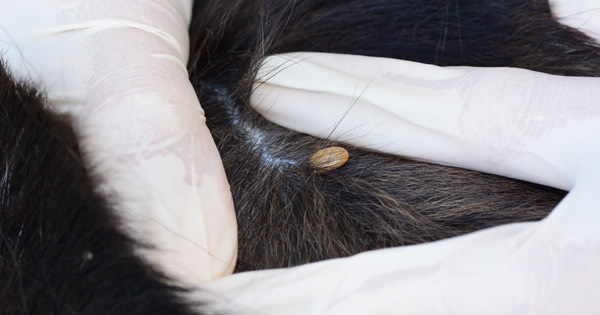If your dog is an enthusiastic and frequent hiking or camping companion, you should be aware of the array of diseases that ticks can transmit to your furry friend. Why are ticks so bad for dogs ? When many people think of tick borne diseases in dogs, their thoughts are dominated by the detriments of Lyme disease.
Lyme Disease
Lyme disease originated in the town of Lyme, Connecticut, for which the disease was named. It is transmitted by deer ticks and western blacklegged ticks, and its incidence has spread throughout the northeastern region of the United States. Cases have also been reported in other regions of the country. The bacterial infection affects dogs and humans. The symptoms of Lyme disease in dogs include:
- Lymph node swelling
- Joint swelling
- Limping
- Fever
- Lethargy
- Decrease in appetite
These symptoms may not present until weeks or months after an infected tick bites the dog.

Canine Ehrlichiosis
Cases of ehrlichiosis have been reported in dogs worldwide. In the United States, its highest prevalence is in the Gulf and southwestern regions. Canine ehrlichiosis is a blood infection that is transmitted by brown dog ticks. Like those of Lyme disease, the symptoms of canine ehrlichiosis may not become apparent until months after the dog becomes infected. The symptoms of canine ehrlichiosis include:
- Fever
- Lethargy
- Decrease in appetite
- Weight loss
- Swelling of the limbs
- Bleeding from the nose
- Nasal or ocular discharge
- Bruising
Rocky Mountain Spotted Fever
Rocky Mountain spotted fever is not limited to the Rocky Mountain states. Cases have been reported throughout the nation and in Canada. This illness is transmitted by American dog ticks and by lone star ticks. The symptoms of Rocky Mountain spotted fever present suddenly and endure for two weeks. The symptoms include:
- Neurological deficits
- Fever
- A stiff gait
Without treatment, Rocky Mountain spotted fever can result in death.
Anaplasmosis
Anaplasmosis is a blood cell infection that is transmitted by deer ticks and by western blacklegged ticks. Anaplasmosis has been diagnosed throughout the country. The symptoms are similar to those of Lyme disease, but these additional symptoms may also present:
Babeosis
Babeosis is transmitted by the American dog tick and the brown dog tick. It can also be transmitted by an infected dog through a bite wound incurred during a fight. This disease has been seen throughout the United States and Canada. Symptoms of babeosis include:
- Lethargy
- Weakness
- Pale mucous membranes
- Vomiting
Babeosis is a blood infection that leads to anemia as the red blood cells are destroyed.

Hepatozoonosis
Reported in the mid-southern and eastern regions of the United States, hepatozoonosis is transmitted by Gulf ticks and brown dog ticks. If a dog ingests one of these infected ticks, the dog can contract the illness. Symptoms of hepatozoonosis include:
- Fever
- Muscle aches and pains
- Bloody diarrhea
- Ocular or nasal discharge
Bartonellosis
Transmitted by the brown dog tick, bartonellosis presents with symptoms that are intermittent and include:
- Fever
- Limping
All of the above-mentioned tick borne diseases in dogs are treated with broad-spectrum antibiotic therapy. The best outcome is achieved when the illness is diagnosed and treated as early as possible. Consider having your dog screened for tick-borne diseases as part of its annual veterinary checkup.
Tick Bite Symptoms
Not every tick bite results in a tick borne disease. If a tick has bitten your dog, you may observe these tick bite symptoms :
- A small lump at the site of the bite
- Redness of the skin on the site of the bite
- Limping or joint swelling if the dog was bitten on one of its limbs
Prevention is Prudent
While some of the above-mentioned diseases can be treated, they can have adverse residual effects on your pet’s health. You must also be aware that many tick borne diseases also afflict humans. Take the following precautions to provide your dog with the best protection against tick borne diseases before you hit the campgrounds and hiking trails together.
- Talk to your veterinarian about vaccinating your dog with the Lyme disease vaccine.
- Use a tick preventative product that is prescribed by your veterinarian on your dog.
- Conclude each day of hiking or camping by checking your dog thoroughly for ticks. If you reside in a heavily wooded area where ticks are prevalent, check your dog every evening after it is indoors for the night.
- If you find an embedded tick, carefully remove it. Your veterinarian can show you how to accomplish this effectively. If you are not confident that you successfully removed the entire tick, bring your dog to your veterinarian as soon as possible. Learn here how to remove a tick from a dog.
By being proactive in protecting your dog against tick borne diseases, you and your furry companion can safely enjoy exploring nature together for many seasons to come.

